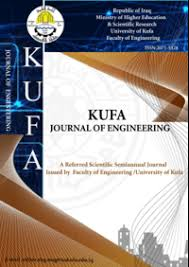Abstract
In this numerical investigation, the effectiveness of utilizing advanced helical coiled wires (HCWs) as a tube insert for the purpose of heat transfer and turbulence enhancement under turbulent flow conditions (Reynolds numbers: 3000-11000) was examined. HCW followed a helical guide path instead of a straight one in a typical coiled wire case, resulting in increased flow complexity, six models were tested with pitch ratio (P/D) of 1, coiled wire pitch (p) of 6 mm, large base radius (R1) ranged 7-10 mm, coiled wire centerline radius (r) ranged 3-6 mm. ANSYS Fluent 22 was used for simulation. The working fluid considered throughout the study was air as a single phase flow case. The governing equations; The equation of continuity, Equations of momentum conservation, and The equation for energy conservation were solved using finite volume method and k-ε turbulence model. Results indicated increased Nusselt number (Nu) and friction factor (f) compared to the plain tube. Thermal performance factor (TPF) showed an inverse relationship with Reynolds number. The study reported that the circular wire without tapering insert at Re = 3000 exhibited the highest thermal performance factor of 1.228, while the highest enhancement ratio for Nusselt number of 3.86 was recorded in the same case. Also, this model recorded the maximum friction factor increasing at a friction factor ratio of 30.97
Keywords
Computational fluid dynamics
Forced Convection
Heat Exchanger Design
Heat Transfer Enhancement
Helical coiled wire
